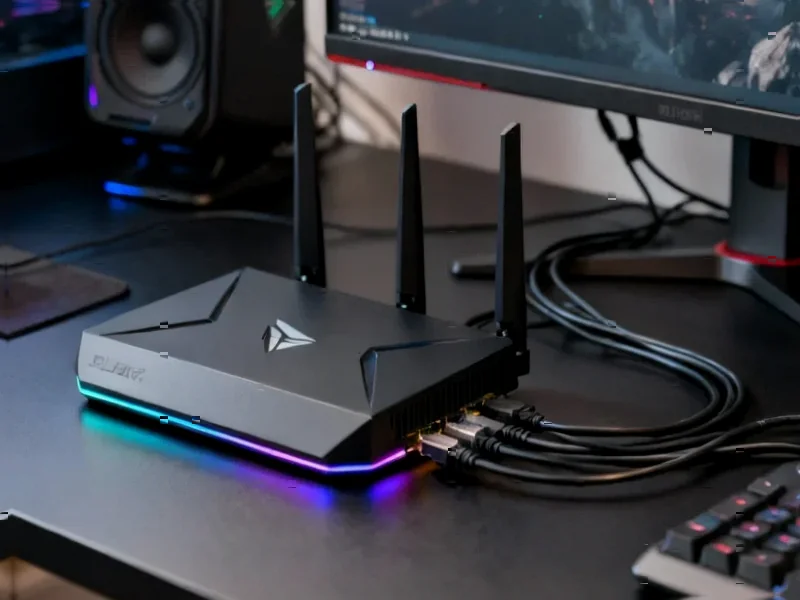According to Embedded Computing Design, Acer has launched the Veriton M4730G compact business desktop powered by Intel Core Ultra Processors with Intel Arc graphics for AI acceleration. The system supports up to 256GB of DDR5 memory across four DIMM slots with speeds ranging from 4800 to 6400 MT/s, along with multiple storage options including SATA3 connectors and optional M.2 PCIe SSDs. The 168mm x 265mm x 353mm tower features expansion capabilities through PCIe x16 Gen5 and PCIe x4 Gen4 slots, plus wireless connectivity options up to Wi-Fi 7 and Bluetooth 5.4. This launch is part of Intel’s broader AI Edge initiative to integrate AI into existing infrastructure while enhancing security and reliability. The desktop aims to enable local AI model execution, reducing cloud dependency for business applications.
The On-Premises AI Reality Check
While Acer’s compact AI desktop sounds promising for businesses wanting to keep AI workloads local, there are significant questions about whether this hardware configuration can truly handle “large AI models” as claimed. The Intel Core Ultra processors with integrated Arc graphics represent solid mid-range performance, but they’re competing against dedicated AI workstations with professional GPUs containing significantly more memory and compute power. Many enterprise AI models now require 16GB+ of VRAM just for inference, let alone training – the optional 8GB discrete GPU mentioned seems inadequate for anything beyond basic computer vision or small language models. The real test will be whether businesses can actually run meaningful AI workloads locally or if they’ll still need cloud resources for anything substantial.
Memory Bandwidth Bottlenecks
The DDR5 memory support up to 256GB is impressive for a compact system, but memory bandwidth remains a critical constraint for AI workloads. While dual-channel DDR5 at 6400 MT/s provides decent throughput, it pales in comparison to the memory bandwidth available on dedicated AI accelerators or high-end GPUs. Many AI inference tasks, particularly with large language models, are memory-bound rather than compute-bound. The system’s ability to “manage fast data transfer speeds” between CPU and memory might not be sufficient for real-time AI applications where latency matters. Businesses considering this for production AI workloads should carefully benchmark their specific models against the memory subsystem limitations.
Thermal and Power Constraints
The compact form factor presents significant thermal challenges that could throttle sustained AI performance. AI workloads, particularly during training or extended inference sessions, generate substantial heat that’s difficult to dissipate in small enclosures. Intel’s Boost technology helps with energy efficiency, but when pushing AI workloads, these systems often hit thermal limits that force performance reductions. The claim about running “large AI models locally” needs qualification – are we talking about optimized, quantized models that fit within these constraints, or full-scale models that would realistically require more robust cooling and power delivery?
The Cloud Dependency Question
The assertion that this system “removes the dependency of the cloud” deserves scrutiny. While local AI inference certainly reduces latency and data transfer costs, most enterprise AI deployments still benefit from hybrid approaches. Cloud resources provide scalability during peak demand, access to larger models, and centralized management that single desktop systems cannot match. For businesses with sensitive data, local processing makes sense, but they should understand they’re trading cloud scalability for hardware limitations. The reality is that most organizations will still need some cloud component for model updates, data aggregation, or handling overflow workloads.
Market Positioning and Competition
Acer’s entry into compact AI workstations comes amid increasing competition from Dell, HP, and specialized AI hardware vendors. The success of this product will depend heavily on price positioning and whether it delivers meaningful performance advantages over similarly priced alternatives. Intel’s edge AI platform strategy makes sense for their ecosystem, but businesses should evaluate whether Intel’s AI acceleration capabilities match their specific workload requirements compared to AMD or NVIDIA alternatives. The inclusion of OpenVINO toolkit support is valuable for Intel-optimized workloads, but creates vendor lock-in that might limit future flexibility.
Practical Deployment Considerations
For businesses considering these systems, the practical implementation challenges shouldn’t be underestimated. Deploying AI capabilities across distributed desktop environments requires significant IT management overhead, including model updates, security patches, and performance monitoring. The promised “ruggedness” for business environments needs verification through real-world testing in actual deployment scenarios. Additionally, the total cost of ownership calculation must include not just hardware costs, but the IT resources needed to maintain and optimize these AI systems compared to cloud alternatives where infrastructure management is handled by the provider.




